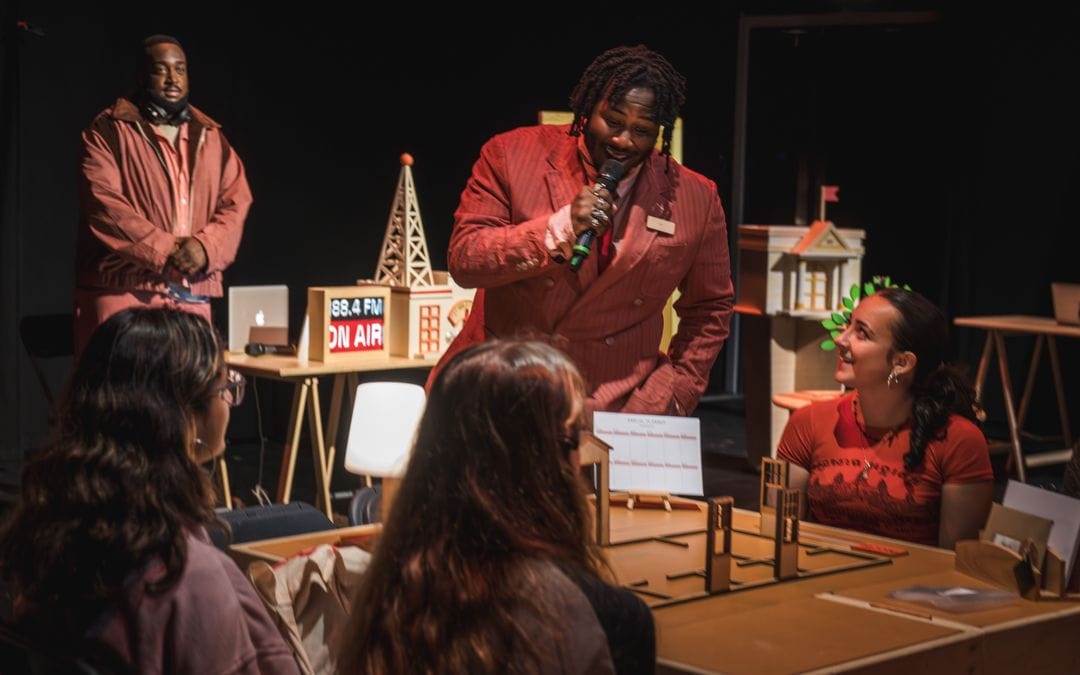
Cadame Co.’s The Rise and Fall of Dracula takes a familiar story, flips the gender of the main character, and twists the old tale into something new. It attempts to tell this new tale via an immersive dance performance, which brings the fangs right up to your neck.
The company consists of choreographer Cassandra Ambe (who plays Dracula), director Melissa Ortiz, and composer David Kayser. If you’re familiar with Bram Stoker’s Dracula, penned in 1897, then your Dracula is an Eastern European aristocrat loosely based on Vlad the Impaler, the infamous voivode of Wallachia. Rise’s Dracula is a striking young woman with long, dark curls who originally hails from Greece. Her origin story is one of trauma and vengeance, making her a far more sympathetic character than most Draculas.
Many of the other characters you are familiar with are similarly modified. Mina Murray is not Harker’s betrothed, but takes on many of the characteristics of Abraham Van Helsing. Van Helsing is present, but as a contemporary of Mina’s. Dr. Seward and Lucy also work their way into the story. Some of the narrative seems to draw, perhaps unintentionally, from other vampire stories. For instance, there are elements of Joseph Sheridan Le Fanu’s Carmilla, in which a female vampire preys on her best friend, and the legend of Elizabeth Bathory. Themes of revenge, isolation and belief wind throughout the narrative, and most of the larger roles belong to women. This is refreshing in genre where women are typically victims who must be saved by male heroes.
The show is immersive in that the audience must follow it throughout the venue, which in this case is Asylum at Stephanie Feury Studio Theatre. This means pressing flat against hallway walls, forming a circle in a darkened room or slipping into one of several mismatched seats in a parlor. It is not immersive in the way (A)partment 8 or Red Flags are immersive, as you’re mostly watching the performance, not participating in it. You will say fewer than three words, if you speak at all. Performers do occasionally touch audience members or draw them into scenes, and there is one particularly clever interaction all guests must endure to enter Dracula’s castle.
Much of the vampirism and combat is expressed through dance, and much of the gore is left to the imagination. Occasionally, the choreography is too large for the relatively small spaces it is confined to, meaning actors come uncomfortably close, but not necessarily on purpose. It’d be nice to see the actors work with the material in larger spaces, or perhaps spaces with fewer guests, that allow more range of motion. Kayser’s original music is appropriately moody and well-done. In particular, cut scenes detailing the mythos of vampires set to an upbeat track are really fun.
Cassandra Ambe shines as Dracula, while many of the other actors are on double-duty, playing multiple roles. Matt Jennings’ Van Helsing is a nice touch, as he brings a youthful crispness to a character often depicted as a bitter, old man.
A few minor unanswered questions and an abrupt ending leaves one has to wonder if — like the Universal horror pictures of the 30s and 40s — that means there’s a sequel or a longer production in the works. It’d be lovely to see Cadame procure a larger budget and play out their vision in an actual sprawling old manor, akin to Delusion.
The Rise and Fall of Dracula is part of the 2017 Hollywood Fringe. Additional showings are on June 9, 5, 18, and 24. Tickets are $15.




















Discussion